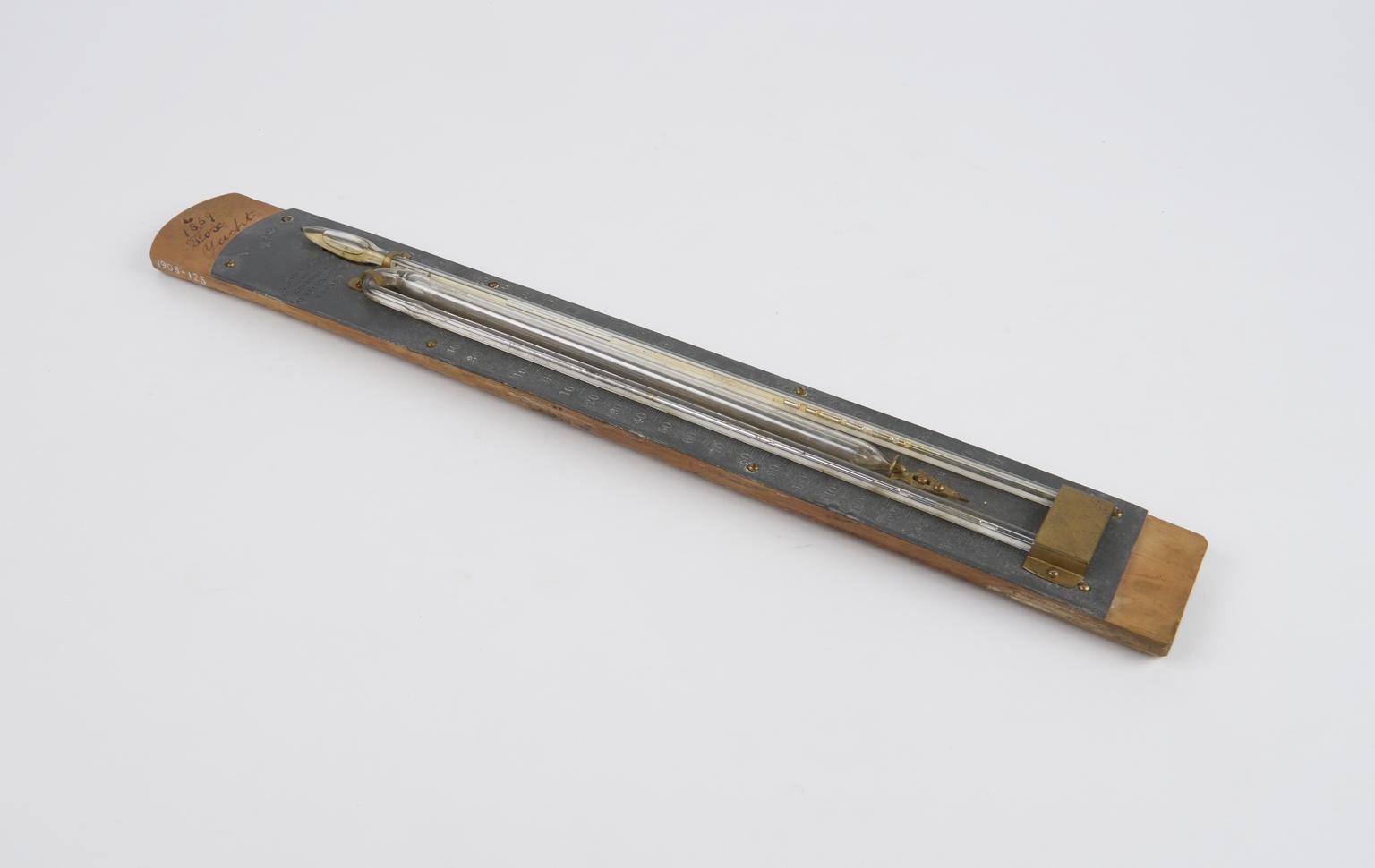Six's thermometer, by Casella, ex-Pandora, 1859
Six's thermometer, by Casella, ex-Pandora, 1859
- Object Number:
- 1908-125/1
- type:
- thermometers
Two Six's thermometers (see 2 stroke nos).
Six's thermometer, by Casella, ex-Pandora, 1859

Maximum and minimum thermometer, designed by James Six and modified by instrument maker Negretti and Zambra for taking temperature measurements at sea, London, England, UK, about 1857. The thermometer’s bulb was enclosed within a glass sheath partly filled with mercury to relieve pressure on the inner bulb, so that the instrument could be used at depth. This thermometer was used aboard the steam yacht Fox, which was purchased by Lady Jane Franklin and despatched to the Arctic in 1859-1860 to search for the missing Captain John Franklin.
Surveyors and navigators struggled to obtain accurate temperature readings from the deep sea because the pressure at depth rendered inaccurate the readings from conventional mercury thermometers.
In 1857 Admiral Robert Fitzroy (who established the Meteorological Office under the British government’s Board of Trade) and meteorologist James Glaisher suggested to the instrument making firm Negretti and Zambra that the Six thermometer be modified by enclosing its bulb within a glass sheath partly filled with mercury, to relieve pressure on the inner bulb. The Six thermometer had been invented in 1780 by James Six; its U-shaped glass tube with two separate temperature scales allowed the user to read off the maximum and minimum temperature achieved over a period of time.
Only 50 of the newly modified thermometers were made and they were issued to the hydrographic ships of the Navy. The prime disadvantage was that, though the thermometer registered minimum temperature, it was impossible to tell the depth at which this coldest water lay.

Case for maximum and minimum thermometer, valved, to a design by Robert Jamieson, Glasgow, patented 1820. Thermometer designed by James Six and modified by instrument maker Negretti and Zambra for taking temperature measurements at sea, London, England, UK, about 1857. The thermometer’s bulb was enclosed within a glass sheath partly filled with mercury to relieve pressure on the inner bulb, so that the instrument could be used at depth. This thermometer was used aboard the steam yacht Fox, which was purchased by Lady Jane Franklin and despatched to the Arctic in 1859-1860 to search for the missing Captain John Franklin.
Surveyors and navigators struggled to obtain accurate temperature readings from the deep sea because the pressure at depth rendered inaccurate the readings from conventional mercury thermometers.
In 1857 Admiral Robert Fitzroy (who established the Meteorological Office under the British government’s Board of Trade) and meteorologist James Glaisher suggested to the instrument making firm Negretti and Zambra that the Six thermometer be modified by enclosing its bulb within a glass sheath partly filled with mercury, to relieve pressure on the inner bulb. The Six thermometer had been invented in 1780 by James Six; its U-shaped glass tube with two separate temperature scales allowed the user to read off the maximum and minimum temperature achieved over a period of time.
Only 50 of the newly modified thermometers were made and they were issued to the hydrographic ships of the Navy. The prime disadvantage was that, though the thermometer registered minimum temperature, it was impossible to tell the depth at which this coldest water lay.